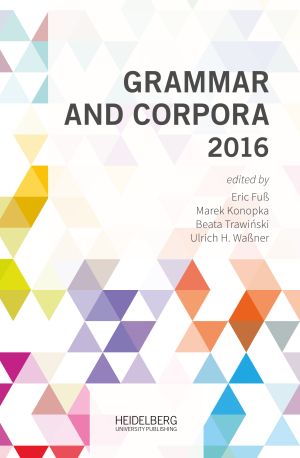Zitationsvorschlag
Lizenz (Kapitel)

Dieses Werk steht unter der Lizenz Creative Commons Namensnennung - Weitergabe unter gleichen Bedingungen 4.0 International.
Identifier (Buch)
Veröffentlicht
Methodological Considerations on Testing Argument Asymmetry in German Cleft Sentences
Abstract We present a corpus study on German es-clefts that tests whether subject clefts are more frequent than object clefts. This observation has been made for several other languages. However, we use a more complex method than earlier studies by not only providing the frequencies of subject/object clefts but by additionally comparing those frequencies to the general frequency of subjects/objects. Our results support the claim that subject clefts are more frequent in German. We argue that a cleft construction in its function to mark focus appears more often with subjects since there are additional options to mark focus on objects. Other features such as exhaustivity and contrast do not play a role in our cleft sample. From these results, we conclude that subjecthood is the main factor that facilitates the use of a cleft, possibly as a result of the author’s intention to disambiguate focus.
Keywords German es-cleft, prosodic prominence, focus marking, argument asymmetry






